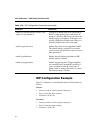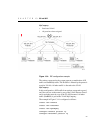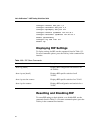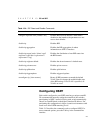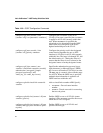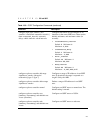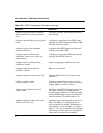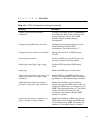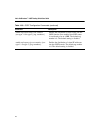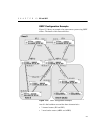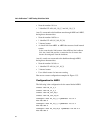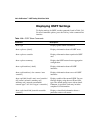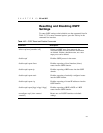
C H A P T E R 13 RIP and OSPF
247
configure ospf routerid [automatic |
<routerid>]
Configures the OSPF routerID. If automatic
is specified, the 480T routing switch uses the
largest IP interface address as the OSPF
routerID. Manual routerID setting is
recommended.
configure ospf spf-hold-time <seconds> Configures the minimum number of seconds
between Shortest Path First (SPF)
recalculations. The default setting is 3.
configure ospf vlan <name> area <areaid> Changes the area ID of an OSPF interface
(VLAN).
create ospf area <areaid> Creates an OSPF area. Area 0.0.0.0 does not
need to be created. It exists by default.
disable ospf export [bgp | i-bgp | e-bgp] Disables OSPF exporting of BGP-related
routes.
enable ospf Enables the OSPF process for the router.
enable ospf export [bgp | i-bgp | e-bgp] cost
<metric> [ase-type-1 | ase-type-2] {tag
<number>}
Enables OSPF to export BGP-related routes
using LSAs to other OSPF routers. The default
tag number is 0. The default setting is disabled.
enable ospf export direct cost <metric>
[ase-type-1 | ase-type-2] {tag <number>}
Enables the distribution of local interface
(direct) routes into the OSPF domain. After it is
enabled, the OSPF router is considered to be an
ASBR. The default tag number is 0. The default
setting is disabled. If an interface route
corresponds to the interface that has OSPF
enabled, it is ignored.
enable ospf export rip cost <metric> [ase-
type-1 | ase-type-2] {tag <number>}
Enables the distribution of RIP routes into the
OSPF domain. Once enabled, the OSPF router
is considered to be an ASBR. The default tag
number is 0. The default setting is disabled.
Table 13.5: OSPF Configuration Commands (continued)
Command Description




